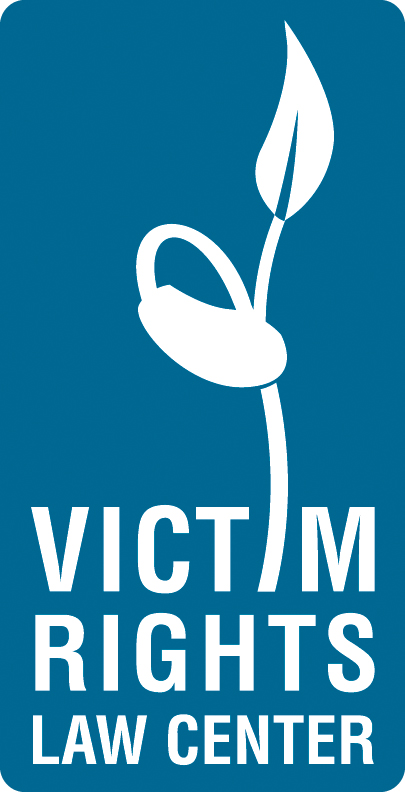Sexual Assault Legal Services Toolkit
Sexual Assault Justice Education Project Where to Start Guide
Toolkit Resources
Victim Rights Law Center is excited to announce the upcoming availability of its Where to Start: Sexual Assault Legal Services Toolkit. This Toolkit will assist OVW grantees in planning for and launching sexual assault legal services projects. The content and resources provided in the Toolkit are derived from the many years of experience VRLC has been providing direct representation to survivors of sexual assault and technical assistance and training to OVW grantees on issues related to sexual assault. Whether you are a sexual assault provider new to providing legal services, or a legal services organization new to serving sexual assault clients, this Toolkit will help your entire organization better serve survivors of sexual violence. Each chapter includes a webinar that discusses key issues to consider as you create and grow your project, in addition to numerous tools to download and modify for the specific needs of your organization. Please see below for the content each of the Toolkit’s 11 chapters.
Introduction
Get oriented to Victim Rights Law Center (VRLC) Where to Start Toolkit: Launching Your Sexual Assault Legal Practice. Find out how to best use the Toolkit and its accompanying resources to help you effectively launch your new sexual assault legal practice.
Ch. 1: Launching Your Practice: Scope of Services
Discover how to use your OVW grant award letter to guide your legal project’s development, how to implement your new project, and how to assess your organization’s initial preparedness to provide legal services to sexual assault survivors.
Ch. 2: Considerations for Co-Located Programs
If your organization is new to providing legal services, or new to providing legal services specific to sexual assault survivors, there are numerous steps you will need to take to prepare your organization. Find out the key issues to consider, including mandatory reporting obligations and how to keep client information protected. In addition, learn how to expand your organization’s current service delivery methods to encompass survivors of sexual assault and how to communicate with your community about your new legal services project.
Chapter 3: Hiring
Learn how to hire staff that are a great match for your new sexual assault legal services project, including how to effectively advertise, interview, and onboard new staff.
Chapter 4: Vicarious Trauma and Survivor Empowerment
Providing legal services to survivors of sexual assault requires a specialized skill set. Discover how to best respond to survivors of trauma and how to empower them to make choices for themselves. At the same time, learn how to recognize and address the vicarious trauma that often impacts service providers who work with survivors of sexual trauma.
Chapter 5: Privacy Considerations When Representing Minors and Vulnerable Adults
Delve deeper into the numerous privacy issues to consider when providing legal services to minor and vulnerable adult survivors of sexual violence. Hear from VRLC’s privacy expert about victim consent for services, VAWA confidentiality, and staff mandatory reporting obligations.
Chapter 6: Cultural Responsiveness
If your OVW grant specifies that your organization serve a culturally specific population, tune into this chapter. Explore how to identify culturally specific populations in your community and how to identify the specific needs of survivors from those communities. Learn simple ways to assess whether your organization currently has the capacity to meet the specific needs of survivors from culturally specific populations.
Chapter 7: Office Policies and Protocols: Best Practices for Survivor-Centered Legal Services
Inform yourself about the best practices for maintaining client files when providing legal services to survivors of sexual assault. Consider why it is necessary to establish office policies related to mandatory reporting, provider-client privilege, and policies that can help maintain confidential the information clients share.
Ch. 8: Meeting and Retaining a Client-Survivor: Key Issues to Address Before Conducting the Intake Interview
Be prepared to represent your first survivor-client by learning what key issues to address before you conduct an intake interview with a minor or adult client. Take stock of unique issues that may arise when conducting a conflict check in sexual assault legal cases. Learn new tools to establish rapport with survivors and how to lay the foundation for a successful provider-client relationship.
Ch. 9: Conducting a Sexual Assault Legal Intake: Keys to Success
Find out how to conduct a comprehensive legal intake and how to address the numerous safety issues specific to representing survivors of sexual assault, including sexual assault-specific safety planning and safe communication with clients. Learn what you can do to increase client follow-through.
Ch. 10: Creating an Effective Outreach Plan: Connecting with Survivors Seeking Your Services
Increase your knowledge about how to reach out to survivors of sexual assault to let them know about your legal services project. Learn how to define your target audience and target your outreach efforts by using VRLC Outreach Planning Tool.
Ch. 11: Collaborating with Community Partners: Connecting with Survivors via Other Organizations
Discover how to connect with potential clients by working with community partners. Review the benefits of collaborating with community partners, how to best inform them about your new sexual assault legal services project, and how to get your organization a seat at the table of existing community collaborations.
Ch. 12: Serving Survivors in Rural Communities
Ch. 13: Effective Supervision: Managing OVW-Funded Attorneys Representing Sexual Assault Survivors
© 2018 Victim Rights Law Center. All rights reserved. This project was supported by grant number 2015-TA-AX-K046 awarded by the Office on Violence Against Women, U.S. Department of Justice. The opinions, findings, and conclusions expressed are those of the author(s) and do not necessarily represent the views of the U.S. Department of Justice.
Launching Your Practice: Scope of Services
Launching Your Practice: Considerations for Co-Located Programs
Resources
- Chapter 2 Assessment Tool
- Attorney-Client Privilege, Work Product, and Confidentiality
- Client-Centered Explanation of Privilege and Confidentiality (English)
- Client Centered Explanation of Privilege and Confidentiality (Span)
- VRLC Privacy Cards (English)
- VRLC Privacy Cards (Spanish)
- Privacy While Working from Home Tip Sheet
- VRLC Personal and Remote Devices Tip Sheet
- Sample Notice of Confidentiality Rights
- Sample Release of Information
- Sample Referral Form
- Sample Client Brochure
Coming Soon!
Coming Soon!
Launching Your Practice: Representing Minors, Elders, and Vulnerable Adults
Launching Your Practice: Cultural Responsiveness
Resources
Safety Planning Resources
- Safety Planning with Adult Sexual Assault Survivors
- Safety Planning with LGBTQ Survivors of Sexual Assault
- Safety Planning with Sexual Assault Survivors Experiencing Homelessness
- Surviving Sexual Violence on the Streets Film
- Surviving Sexual Violence on the Streets Discussion Guide
Farmworker Guidebooks
- Sexual Violence Against Farmworkers: Criminal Justice Professionals Guide (English)
- Sexual Violence Against Farmworkers: Legal Providers Guide (English)
- Sexual Violence Against Farmworkers: Social Service Providers Guide (English)
- Sexual Violence Against Farmworkers: Criminal Justice Professionals Guide (Spanish)
- Sexual Violence Against Farmworkers: Legal Providers Guide (Spanish)
- Sexual Violence Against Farmworkers: Social Service Providers Guide (Spanish)
Launching Your Practice: Office Policies and Protocols
Best Practices for Survivor-Centered Legal Services
Resources
- Chapter 7 Assessment Tool
- VRLC Personal and Remote Devices Tip Sheet
- VRLC Privacy Cards (English)
- VRLC Privacy Cards (Spanish)
Mandatory Reporting Tools
Meeting and Retaining a Client-Survivor
Key Issues to Address Before Conducting the Intake Interview
Conducting a Sexual Assault Legal Intake
Keys to Success
Resources
- Chapter 9 Assessment Tool
- VRLC Holistic Legal Intake
- Sample Retainer Agreement
- Sample Release of Information
- VRLC Personal and Remote Devices Tip Sheet
Safety Planning Resources
- Safety Planning with Adult Sexual Assault Survivors
- Safety Planning with LGBTQ Survivors of Sexual Assault
- Safety Planning with Sexual Assault Survivors Experiencing Homelessness
- Surviving Sexual Violence on the Streets Film
- Surviving Sexual Violence on the Streets Discussion Guide
Farmworker Guidebooks
- Sexual Violence Against Farmworkers: Criminal Justice Professionals Guide (English)
- Sexual Violence Against Farmworkers: Legal Providers Guide (English)
- Sexual Violence Against Farmworkers: Social Service Providers Guide (English)
- Sexual Violence Against Farmworkers: Criminal Justice Professionals Guide (Spanish)
- Sexual Violence Against Farmworkers: Legal Providers Guide (Spanish)
- Sexual Violence Against Farmworkers: Social Service Providers Guide (Spanish)
VRLC Webinars
Creating an Effective Outreach Plan
Connecting with Survivors Seeking Your Services
Collaborating with Community Partners
Connecting with Survivors via Other Organizations
Serving Survivors in Rural Communities
Resources
- Tips: Protecting Survivor Privacy in Rural Areas
- VRLC Outreach Planning Tool
- VRLC Outreach Action Plan & Tracking Chart
Farmworker Guidebooks
- Sexual Violence Against Farmworkers: Criminal Justice Professionals Guide (English)
- Sexual Violence Against Farmworkers: Legal Providers Guide (English)
- Sexual Violence Against Farmworkers: Social Service Providers Guide (English)
Useful Links
Effective Supervision
Managing OVW-Funded Attorneys Representing Sexual Assault Survivors
Resources
Picturing Your Program: Planning for Organizational Growth
Organizational Strategies to Alleviate Vicarious Trauma
Trauma Informed Supervision RPN Strategies
Building Cultures of Care: A Guide for Sexual Assault Services Programs
Strengthening Services Through Supervision
ReShape Newsletter “Supervision Tools” July 2019
Building Cultures of Care: A Guide for Sexual Assault Services Programs
Useful Links
What you Need to Know to Use the Toolkit:
Browse the titles of the 13 different chapters.
Choose the chapter that intrigues you the most, contains the content you are seeking, or if you are new to providing legal services to sexual assault survivors, start from the beginning.
Watch the chapter’s video. Each video is 20-30 minutes in length and is chock-full of helpful information. You may pause the video at any time and watch it as many times as you like.
Download the resources that are referenced in each chapter that correspond to the chapter’s theme.

Use the Assessment Tool found in each chapter’s resource section. The Assessment Tool summarizes the key points addressed in the chapter and provides a clear check list that you can use help implement the chapter’s material in your organization.
Customize, modify, and reproduce any of the resource templates provided in the resource section in Microsoft Word format to best suit your organizational needs
Utilize but please do NOT modify the resources provided in PDF format.

Cross reference related chapters by noting the icon that indicates that additional information is provided in a separate chapter
Please request any kind of accommodation you need in order to successfully access the Toolkit or resource materials. For those with visual impairments, VRLC can provide you with a plain text version of each chapter’s slides compatible with most screen readers.
Contact VRLC Technical Assistance Team for specific questions about how to provide survivor-centered legal services to victims of sexual violence.
© 2018 Victim Rights Law Center. All rights reserved. This project was supported by grant number 2015-TA-AX-K046 awarded by the Office on Violence Against Women, U.S. Department of Justice. The opinions, findings, and conclusions expressed are those of the author(s) and do not necessarily represent the views of the U.S. Department of Justice.
Contact Us
Massachusetts
11 Beacon Street, Suite 520
Boston, MA 02108
Phone: (617) 399-6720
Oregon
610 SW Broadway, Suite 308
Portland, OR 97205
Phone: (503) 274-5477
Sign Up For Updates!
Privacy Policy | Disclaimer | Nondiscrimination Notice | Staff Portal | Log In
Copyright © 2024 Victim Rights Law Center
Victim Rights Law Center’s logo is a registered trademark | Tax ID #02-0588944
